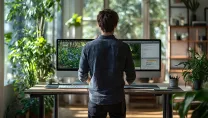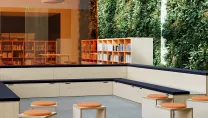In today’s ever-evolving educational landscape, having the right interior design for education can significantly enhance both learning and teaching experiences.
An education fit out is more than just selecting chairs and desks; it’s about creating spaces that inspire, engage, and adapt to the needs of students and teachers. From a primary school to a higher education institution, there are essential factors to consider to ensure your project is both functional and future-proof.
Understanding the Needs of Different Learning Spaces
Every learning space has its own specific requirements. A classroom is not the same as a library, and a lab is different from a breakout space.
The furniture, technology and design of each area should reflect its function and the activities that take place there. For example:
- Classrooms: Focus on traditional and hybrid learning setups, allowing both individual and group work.
- Libraries: Choose comfortable, quiet seating arrangements to encourage focus and reflection.
- Technology Labs: Prioritise workstations that support tech integration, such as tables with built-in power outlets, wireless visualisers to support demonstrations and ample space for devices.
By tailoring the design to the unique needs of each space, you ensure that the furniture in your education fit out supports both the students’ activities and the teachers’ needs.
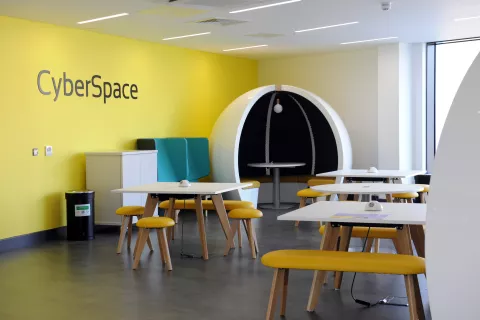
Prioritise Flexibility and Adaptability
Flexible and adaptable interior design for education is key for schools that want to future-proof their environment. Consider:
- Modular Desks: These can be rearranged to suit different teaching methods, from individual work and exam settings to group collaboration.
- Movable Chairs: Allowing ergonomic support to suit different student’s physical needs.
- Booths: Supporting various tasks, booths can be beneficial for private discussions with students, for smaller group work or for teachers to have a quiet place to work independently.
According to the OECD (Organisation for Economic Co-operation and Development), schools see higher levels of student engagement and participation when they have flexible learning spaces.
Focus on Ergonomics and Comfort
Students and teachers spend long hours seated, so ensuring that the furniture is ergonomic is essential for promoting general wellbeing, good posture and reducing discomfort. Ergonomic furniture supports concentration and learning by minimising distractions caused by discomfort.
- Ergonomic Chairs: Look for features like adjustable height, lumbar support, and swivel mechanisms to accommodate a range of body types.
- Desks: Ensure that desks are at a comfortable height for students and that they provide enough workspace for materials and tech tools.
Comfortable, ergonomic furniture not only improves focus but also contributes to the wellbeing of both students and teachers. The Haworth Research Report looked at the impact of ergonomic design in education fit outs on students, and found that “ergonomic furniture can reduce discomfort and improve concentration by 17%, leading to better outcomes for students.”.
Consider Durability and Maintenance
Educational furniture gets used every day and should be bought to last long-term. Furniture that looks great on day one may not stand the test of time if it's not built to last. Durability needs to be considered to minimise replacement costs and maintenance needs.
- Materials: Choose furniture made from high-quality, durable materials like metal frames or hardwearing laminates that can withstand the reality of educational use.
- Finishes: Opt for easy-to-clean finishes that require minimal maintenance to keep the space looking clean.
Durability also goes hand in hand with sustainability, as investing in long-lasting materials reduces the need for frequent replacements, helping your budget stretch.
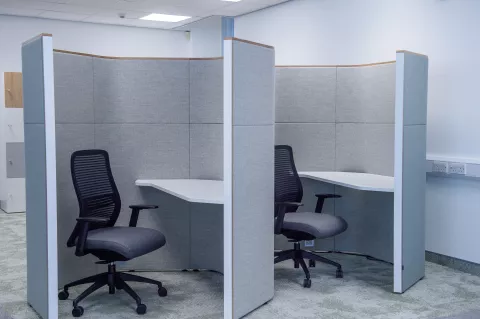
Ensuring Safety and Accessibility
In an educational fit out, it’s important that safety is at the forefront of design. Likewise, accessibility should be a priority, ensuring that all students, regardless of ability, can learn in comfort.
- Rounded Edges: Reduce the risk of injury by choosing furniture and integrated technology with smooth, rounded corners or halo protection.
- Non-toxic Materials: Ensure the materials used in furniture manufacturing are free from harmful chemicals.
- Adjustable Features: Desks and chairs should be adjustable to accommodate students as they grow.
Accessibility and safety are not just about compliance - they help create environments where every student is comfortable and supported.
Aesthetics and Engagement
The look and feel of your learning environment can have a profound impact on student engagement. Vibrant colours and visually appealing designs stimulate creativity and excitement for learning.
- Colour Schemes: Bright, bold colours can energise a space, while softer tones promote calm and focus. Think about how the colours of a library / classroom could help students in those spaces.
- Design: Education fit outs that are visually interesting without being overwhelming helps create a welcoming atmosphere.
A study undertaken by Professor Peter Barrett from the University of Salford found that “well-designed classrooms can boost learning progress in reading, writing, and maths by up to 16%.”. So, it’s important to consider how the overall aesthetic of your space aligns with your educational philosophy and brand.
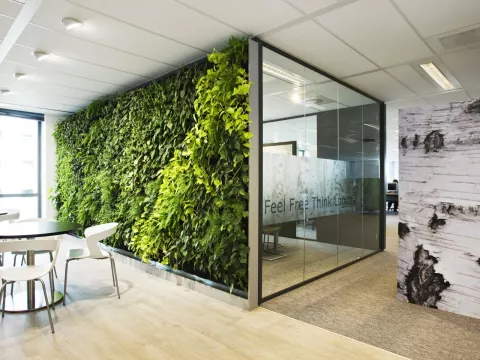
Budget Considerations
Balancing budget constraints with quality can be challenging, but it's important to focus on long-term value rather than just the initial cost. Look for:
- Cost-effective Materials: High-quality, affordable materials that don't compromise on durability.
- Multipurpose Furniture: Investing in versatile pieces that serve multiple functions can help stretch your budget further.
- Leasing: If you’re able to, it could be beneficial to consider leasing your furniture solutions.
Plan for Future Needs
As technology and teaching methods evolve, your needs will too. When planning an education fit out, think beyond what you need today...
- Reconfigurable Furniture: Choose pieces that can be easily updated or repurposed as your space evolves.
- Future-Proof Technology: Ensure that your furniture can accommodate new tech tools as they emerge.
It’s worth remembering the results of a survey conducted by EdTech Magazine. They found that 86% of educators believe integrating tech into a classroom’s furniture helps streamline teaching and improves the overall learning experience by making classrooms more adaptable to tech tools.
By planning ahead, you’ll save time and money in the long run, keeping your educational spaces relevant and functional for years to come.
Conclusion
Creating the ideal learning environment is about more than just furniture - it's about designing spaces that foster engagement, support modern teaching methods, and are built to last. By considering these factors, your education fit out will meet today’s needs and also adapt to future challenges.
Take a look at how Sharp UK helped transform the learning spaces at Sacred Heart School - an inspiring example of how thoughtful design can elevate the educational experience.
Get in touch today so we can help you plan your education fit out



